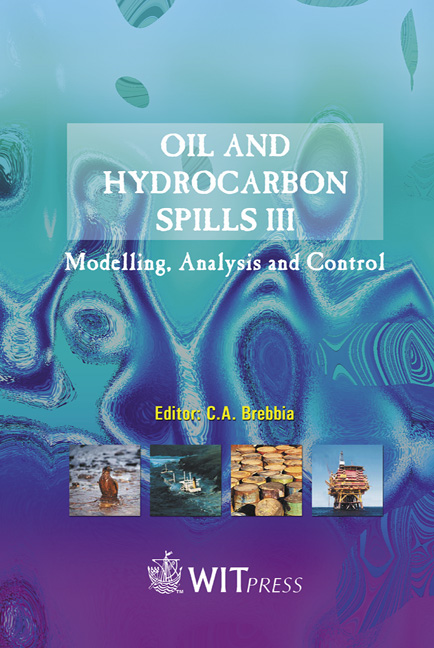A New Biosurfactant For Use In The Clean Up Of Oil Spills On Sea Water Environment
Price
Free (open access)
Transaction
Volume
59
Pages
Published
2002
Size
359 kb
Paper DOI
10.2495/OIL020231
Copyright
WIT Press
Author(s)
F. Crescenzi, M. Buffagni, E. D’Angeli & F. Porcelli
Abstract
A new biosurfactant for use in the clean up of oil spills on sea water environment F. Crescenzi1, M. Buffagni2, E. D’Angeli1 & F. Porcelli1 1 EniTecaologie, Monterotondo, Italy. 2 ENI/Div. Agip, S. Donato Milanese, Italy. Abstract In this paper we describe a new environmentally friendly surface active compound of biological origin (biosurfactant) which is capable of disrupting oil slicks floating on the water surface, promoting oil dispersion and enhancing its natural biodegradation. Trials with oil slicks on seawater using this product have been carried out. Results show the disaggregation of the biosurfactant treated slick into a stable emulsion whose biological degradation by natural marine microorganisms is greatly enhanced. The structure of the biosurfactant basically consists of a polymeric polysaccharidic chain with hydrophobic ester linked fatty acid substitutions of 10-14 carbon atoms length. This biosurfactant can be used for both treating slicks floating on water surfaces and for application as beach cleaning agent. Compared to commercially available chemical dispersants the new biosurfactant is totally non toxic, it forms a stable emulsion that actively promotes oil biodegradation. Unlike other oil spill products claiming to increase biodegradation of the oil, the biosurfactant based product does not incorporate mineral nutrients nor living microorganisms aiming to augment their concentration in the treated environment. The enhancement of oil biodegradation as a result of the new biosurfactant is due to the enhanced adhesion action of marine microorganisms onto the oil surface. 1 Introduction Oil spills remain a major threat for the marine environment. The environmental consequences of oil spills are dramatic for marine habitat and sea related biological and human activities. Remediation is difficult, costly and inefficient
Keywords





